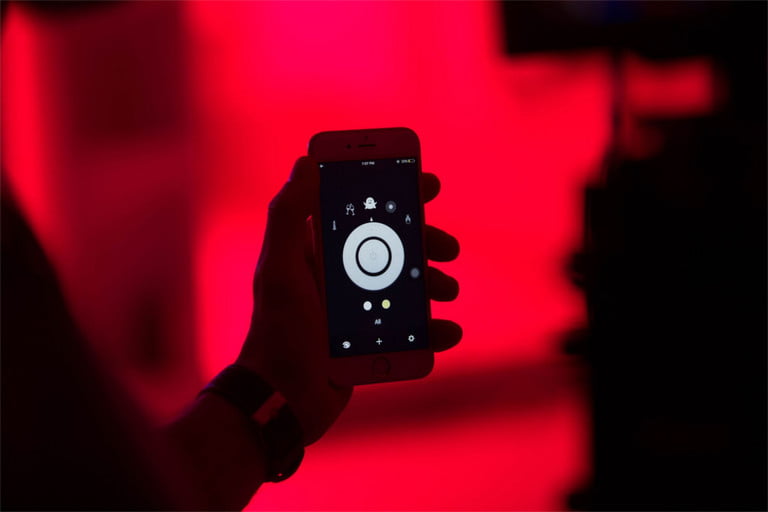
The top smart lighting home automations
Smart lighting is now more advanced than it has ever been. For every potential location or socket, there are a plethora of smart lights, many of which come with extra capabilities that can be managed via a smartphone app. What are you expected to do with them, though? So, here you will be able to identify what are the top smart light home automations that you can actually set up to automate as a routine.
This guide on the best automation choices for your smart lights, as well as advice on how to set them up. Hope this provides an answer to that dilemma. Take a glance around for some inspiration!
Make a ritual for “good night.”
Home automation rituals, are a collection of smart device operations that all answer to one voice command. This is possible if you have a digital assistant. For example, you can build a “Google home, good night” routine that turns off all of your smart home electronics or dim a single bulb. More information on how to create Voice assistant routines may be found in our tutorial.
Creating everyday rituals
It’s simple to set your lights to switch on and off at specified times throughout the day using your smart lighting app. Any smart app already must have this feature. This is great if you want to save a little time switching on and off all of the lights in your house (especially if you have a regular schedule). However, residents may really appreciate this feature when they go on vacation. Even though no one is at home, the scheduled light turning on or off gives the impression that the house is still occupied.

Using a motion detector to control lighting
This is really a typical practice in workplaces throughout the world, but owing to solutions like the Philips Hue Motion Detector for Smart Lighting, you can now experience the benefits at home too. This enables you to install a device that would detect motion in a prominent location in your home and link it to a smart lamp. Then the lightbulb will switch on autonomously whenever somebody tries to enter.
It is indeed a great solution for places where reaching for the bulb switch is daunting, when ever it’s pitch black, as well as when your hands are constantly occupied. Consider stairs in basements, cabinets and stores in kitchens, car park, as well as other suitable areas. If your home doesn’t yet have a smart surveillance camera, you should use this strategy at your entrance, because it will signal you whenever anyone arrives.
Configurations for mood lighting
Automation lighting can also be used as decorative lighting, allowing you to explore another new trick: adjusting the shades of the lamp to identify the perfect mood lighting. One fascinating feature about smart light system is that most of these are able to arrange to some specific color codes (there are millions of possible color shades), allowing you to get exactly the shade you want. There are plenty of ingenious ways to employ smart lights such as this, ranging from gaming rooms and play areas to TV frame lighting.
Do you recall how we emphasized on establishing a decent nighttime ritual? It’s also quite simple to set up a “sensual night” schedule that fades the spotlight lighting and switches them hues to a seductive tint in the surroundings, all while playing a perfect fitting song playlist. Even when your late afternoon seems somewhat like rounding up the kids to sleep rather than sensual romantic vibe, consider putting up a color shift pattern that signals to get ready to tidying — and afterwards switches to dim when it is nighttime.

When the alarm goes off, the laser lights flashes.
There are indeed a range of methods to create this type of route, however IFTTT is amongst the most popular. Assume there is one Nest Protect, that can sense fire and carbon monoxide gas fumes and alert users. IFTTT (If This, Then That) is a system that provides connectivity to smart gadgets and link those to specified actions or reactions. Which implies IFTTT can be employed to link the existing Nest Protect’s functions to your automated lamp setup, so that when a fire alarm sound goes off, your smart lamps can be arranged to blaze, spark a red flash, or do something else to indicate that something must be off.
Do you prefer the concept of lighting alert system? You may use them for a variety of purposes, like generating blinking lamp signals or flashlight when a sound is sensed by the baby monitor detector in the infant’s chamber.
Fades away or slow luminescence
Most of the smart automated lamps, which including Philips Hue and Lifx, feature dimming and lowering the fade capabilities, allowing you to alter the intensity of the illumination (ranging from 1 to 100). Fading away suggestions can be added to your set up utilizing their applications. One of the most common applications of this controlled brightening and dimming is to replicate the rising and setting of the sun throughout your home, which may benefit your circadian cycles (it also looks cool). You might also make a brightening timer that serves as a inspecting alert that would slowly fade away whenever it’s about time for a snooze.